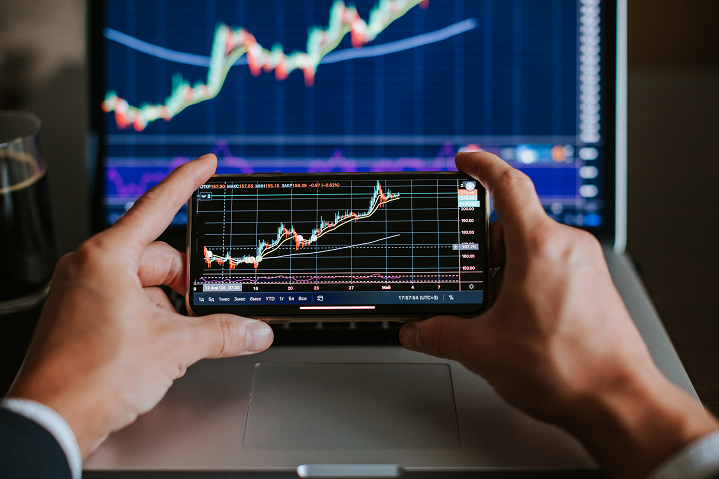Forex trading can be a highly lucrative endeavor, offering the potential for significant profits and financial independence. However, mastering the art of forex trading can be challenging, especially for beginners. This article aims to provide a comprehensive guide for forex trading, covering everything from the basics to advanced strategies and tools. We will emphasize the importance of proper education, risk management, and continuous improvement in the first two paragraphs.
Whether you are a novice or an experienced trader, it is essential to continually expand your knowledge and refine your skills. This guide for forex trading will serve as a valuable resource for improving your understanding of the forex market, developing and implementing effective trading strategies, and ultimately maximizing your trading potential.
Understanding the Forex Market
The foreign exchange (forex) market is the largest and most liquid financial market globally, with daily trading volume exceeding $6 trillion. In forex trading, investors buy and sell currencies in pairs, betting on the value of one currency against another. Some of the most popular currency pairs include EUR/USD, GBP/USD, and USD/JPY.
Key Terminologies in Forex Trading
Before diving into forex trading strategies, it’s essential to familiarize yourself with some key terminologies:
- Pips: The smallest price movement in the forex market, usually quoted to the fourth decimal place for most currency pairs.
- Lots: The standard unit of trading volume in the forex market, typically representing 100,000 units of the base currency.
- Margin: The amount of money required to open a leveraged trading position.
- Leverage: A tool provided by forex brokers that allows traders to control larger positions with a smaller amount of capital.
- Long/Short positions: A long position is when a trader buys a currency pair expecting its value to rise, while a short position is when a trader sells a currency pair expecting its value to fall.
Developing a Forex Trading Strategy
One of the essential aspects of successful forex trading is having a well-defined trading strategy. Your trading strategy should include:
- Trading goals: Define your short-term and long-term trading objectives, such as income generation or capital growth.
- Trading style:Determine your preferred trading style, such as day trading, swing trading, or position trading, based on your risk tolerance, time commitment, and financial goals.
- Technical and fundamental analysis: Utilize both technical analysis (chart patterns, indicators) and fundamental analysis (economic data, geopolitical events) to inform your trading decisions.
- Risk management: Establish risk management rules to protect your trading capital, including position sizing, stop-loss orders, and risk-reward ratios.
- Trading plan: Create a detailed trading plan outlining your strategy, entry and exit criteria, and risk management rules.
Choosing the Right Forex Broker
Selecting a reliable and trustworthy forex broker is crucial for successful trading. Consider the following factors when choosing a forex broker:
- Regulation and security: Ensure the broker is regulated by a reputable financial authority and employs robust security measures to protect your funds and personal information.
- Trading platform: Choose a broker with a user-friendly and feature-rich trading platform that suits your trading style and requirements.
- Spreads and commissions: Compare the spreads and commissions charged by different brokers to find the most competitive rates.
- Customer support: Opt for a broker with responsive and knowledgeable customer support, available through multiple channels (phone, email, live chat).
- Additional resources: Look for brokers that offer educational resources, research tools, and market analysis to support your trading journey.
Continuous Learning and Improvement
Successful forex traders never stop learning and improving their skills. To stay ahead in the constantly evolving forex market, consider the following:
- Stay informed: Keep up-to-date with the latest market news, economic events, and geopolitical developments that could impact currency prices.
- Practice and refine: Regularly practice and refine your trading strategies using a demo account or by tracking your trades in a journal.
- Learn from others: Engage with other traders through online forums, social media, or local trading groups to share ideas, insights, and experiences.
- Expand your knowledge: Continuously expand your knowledge by reading books, attending webinars, and enrolling in trading courses.
Conclusion and Suggestions
This guide for forex trading provides a solid foundation for anyone looking to venture into the world of forex trading. However, it’s essential to understand that forex trading requires patience, discipline, and a commitment to continuous learning and improvement. By following the tips and strategies outlined in this guide, you can develop a successful trading strategy, minimize risks, and ultimately maximize your potential for long-term success in the forex market. Remember, the key to successful forex trading lies in thorough preparation, sound decision-making.







